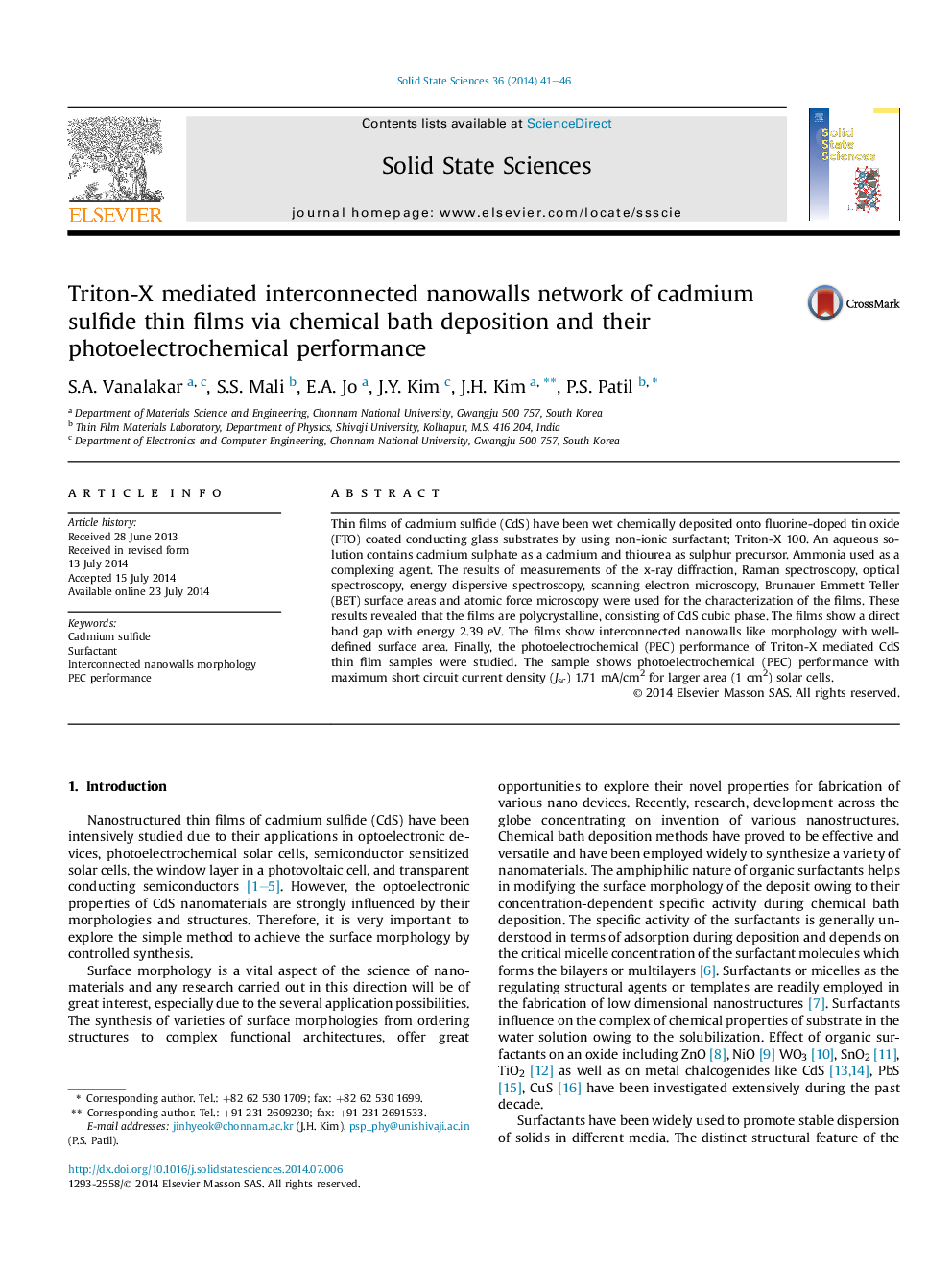| Article ID | Journal | Published Year | Pages | File Type |
|---|---|---|---|---|
| 1504381 | Solid State Sciences | 2014 | 6 Pages |
•First report of Triton mediated CdS thin films with interconnected nanowall network.•Triton-X mediated CdS was closely related to new understanding of growth mechanism.•We explain the possible growth mechanism of the interconnected nanowall network.•The growth temperature does not exceed 90 °C in any step of the synthesis.
Thin films of cadmium sulfide (CdS) have been wet chemically deposited onto fluorine-doped tin oxide (FTO) coated conducting glass substrates by using non-ionic surfactant; Triton-X 100. An aqueous solution contains cadmium sulphate as a cadmium and thiourea as sulphur precursor. Ammonia used as a complexing agent. The results of measurements of the x-ray diffraction, Raman spectroscopy, optical spectroscopy, energy dispersive spectroscopy, scanning electron microscopy, Brunauer Emmett Teller (BET) surface areas and atomic force microscopy were used for the characterization of the films. These results revealed that the films are polycrystalline, consisting of CdS cubic phase. The films show a direct band gap with energy 2.39 eV. The films show interconnected nanowalls like morphology with well-defined surface area. Finally, the photoelectrochemical (PEC) performance of Triton-X mediated CdS thin film samples were studied. The sample shows photoelectrochemical (PEC) performance with maximum short circuit current density (Jsc) 1.71 mA/cm2 for larger area (1 cm2) solar cells.
Graphical abstractFigure optionsDownload full-size imageDownload as PowerPoint slide
